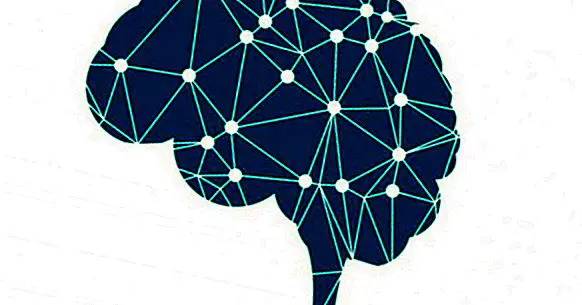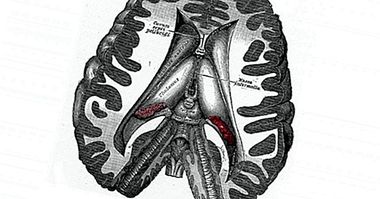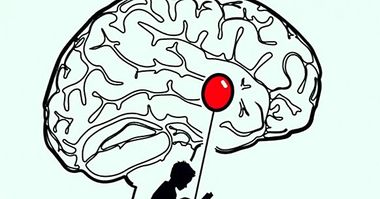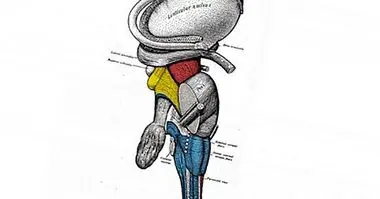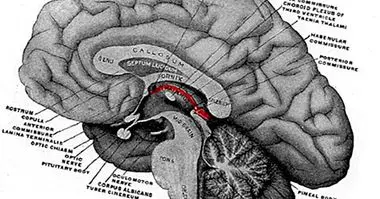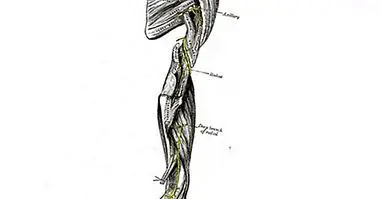Do two consciousnesses appear when dividing the brain?
One of the most important therapeutic advances in epilepsy and neurosurgery is the section of the corpus callosum. This structure unites the two hemispheres and, among other things, allows information from one side to pass to the other. It also allows the electrical activation of epilepsy to spread, so that its section and separation of the two hemispheres prevents epileptic seizures from going further.
What happens when we cut the brain in two? It has been described how the disconnection between the two cerebral hemispheres causes difficulties and changes in the execution of tasks that require the integration of information. When this happens, it acts as if one part of the brain knew the information and the other did not, as if we had a double brain. Can we speak, then, of a double consciousness?
The divided brain
When the researchers tested the visual functions of patients undergoing callosotomy, they found a curious phenomenon. Apparently, when we present an object in their right visual field, they are able to recognize it and point it out verbally as well as raising the right hand. However, when the object to be recognized is in the left field, while the patient claims to see absolutely no object, his left hand points to it.
This apparent contradiction resolves quickly if we know that control over the body is crossed : the right hemisphere controls the left part of the body, while the left hemisphere controls the right part. In this way, when the object is presented in the right field, the left hemisphere responds by raising the right hand and verbally, since the speech is on the left side. On the other hand, when the object is in the left field, the right hemisphere responds by raising the left hand, but can not express it verbally because the language lodges in the other hemisphere.
However, this view of the divided brain phenomenon is not as conclusive as we would like. The evidence in favor of this phenomenon is reduced and it is becoming smaller because nowadays we have better alternatives to callosotomy to treat epilepsy. This generates problems of replicability that are difficult to overcome. On the other hand there are doubts about whether the classic cases described in the literature are really as representative as they claim, since within the already small sample of callosotomized patients there are exceptions that do not comply with what is predicted according to the theory.
Theories about consciousness
The two most relevant theories to understand the phenomenon of the divided brain are the theory of the global work space (Global Workspace Theory or GWT) by Bernard Baars and the theory of integration of information (Integration Information Theory or IIT).
The GWT proposes the metaphor of theater to understand consciousness . All those processes and phenomena of which we are aware are those that are illuminated by the focus of attention, just as in a work the foci shed light on those parts of the scene that are relevant to the action. In the shadows there are all kinds of processes that, not being focused, do not reach consciousness. Thus, consciousness is a unitary process and the section of the brain in two should give place either to a double consciousness, or to a consciousness focused on only one hemisphere of the two.
The IIT proposes that it is the sum of informational integration that builds consciousness. The more integrated information, the higher the level of consciousness. In a unitary brain, all the information converges in a single point forming a single consciousness. In a divided brain in which information from one side does not reach the other, two different points of information convergence should be formed, leading to the formation of two different consciousnesses, each with its own hemispheric information.
Are two consciousnesses really formed?
Researchers tested the irremovability of the classical theory of the divided brain through the section of the corpus callosum . For this, they recruited two individuals who had undergone this injury in a therapeutic way and carried out five visual recognition experiments.
Contrary to what was described in the textbooks, the participants were perfectly able to indicate where the visual stimulus was, if it appeared, in any part of the visual field, both pointing with the hand and verbally. In some experiment it was found that one of the two participants was more able to name the stimulus that was used (an animal) when it was presented in the right visual hemifield, due to the localization of the language. Although the visual information did seem to be disintegrated, it was not found that the place where the stimulus was presented was associated with a specific type of response.
Conflict with classical theories
These data, although they are far from conclusive due to the small sample, show that what is predicted by the classical theory is not rigidly fulfilled. In fact, it has yet to be proven that it will be met in most patients. The truth is that the evidence with these two patients in five tasks that challenge the basic assumptions not only conflicts with the old clinical cases, but also with the theories of consciousness described above.
Both the GWD and the IIT predict that after the section of the corpus callosum and the interruption of the flow of information from one side to the other, two separate consciousnesses will form. The truth is that none of these patients showed signs of double consciousness and explained that they had a single, well-integrated consciousness. These data do fit well with another of the theories of consciousness: that of recurrent local processing. This theory predicts that the only interaction and exchange between two different areas of the brain is enough to bring information to consciousness. Thus, it does not take two connected hemispheres to bring to the same consciousness separate information by callosotomy.
Other possible explanations
The results are not final and should be taken with tweezers . It is possible to offer alternative explanations that integrate what is described in the typical cases and what was found in this study. For example, it must be taken into account that patients taken as subjects were callosotomized more than 15 years ago. It could be that after the operation the information is effectively disintegrated, but over time the brain has found a way to join the double consciousness and re-form one.
Still, it is fascinating that these patients with split perception are able to gather information and represent it in a single consciousness, giving a unified response. It is a phenomenon that will undoubtedly have to be answered some day if we want to have a truly explanatory theory of consciousness.

